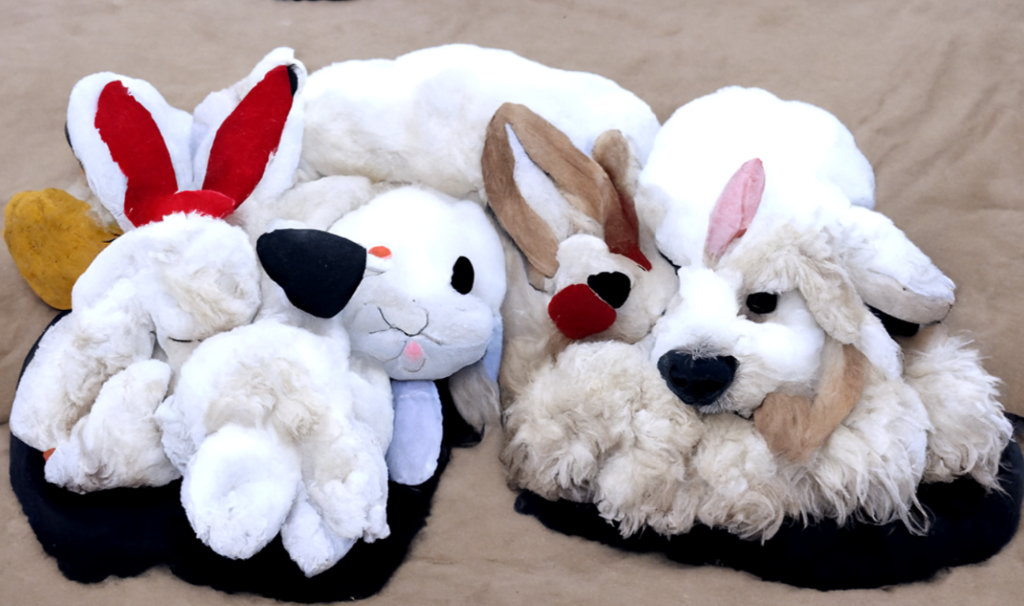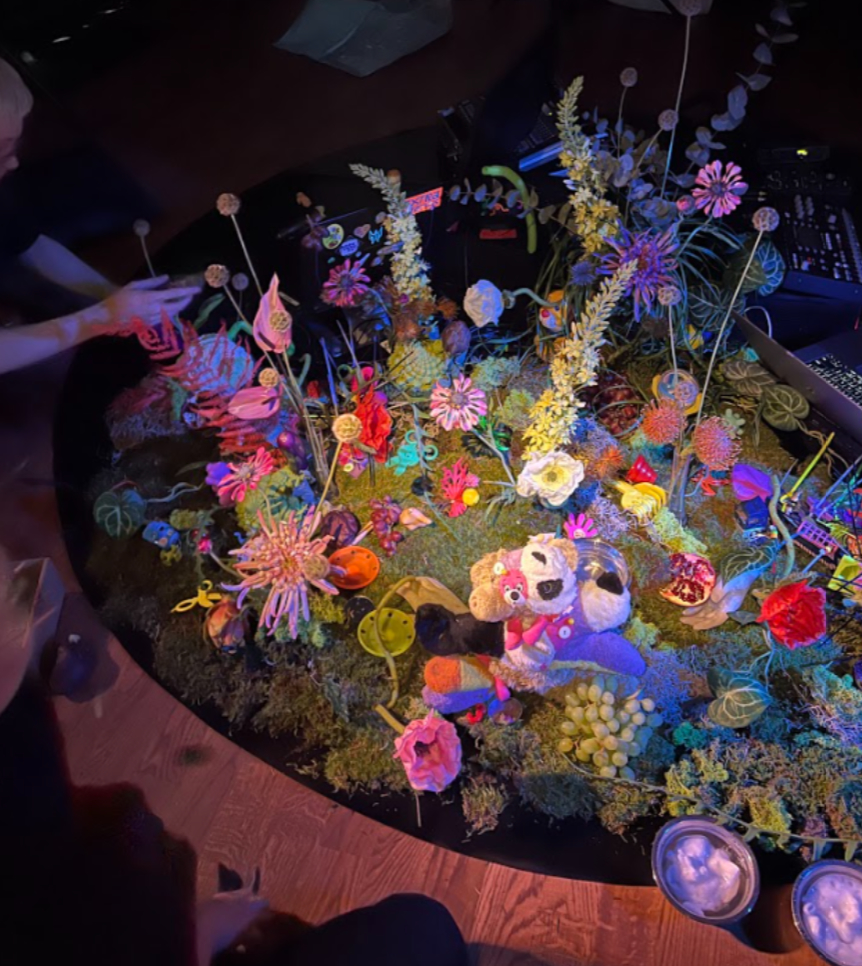Interview by CLOT Magazine

Soyun Park is a digital artist working with image and interaction. Her graduation work, Wunderkammer 10.0, created with music producer and interdisciplinary artists Wellsgoodness and Yelim Ki, carried the viewer through an AI-generated audiovisual journey exploring a post-apocalyptic data landscape. Wunderkammer 10.0 aims to reveal problems inherent to technology-driven societies subject to monopolistic tech corporations’ powerful influence.
For this year’s edition of Rewire, the festival presented the exhibition Proximity Music: Sensing After Thought. Curated jointly by Rewire and iii – an artist-run community platform supporting new interdisciplinary practices linking performance, technology and the human senses that contribute to international developments in the field of Art, Science & Technology-, used the idea of interruption to enter a discourse on different states of human sensing, being and perceiving the world.
The exhibition features a premieré Fantasia Realism, a collaboration between Soyun Park and Wellsgoodness created during a one-month residency for iii. Fantasia Realism is a machine learning system trained on fictional stories such as fairy tales, horrors, and thrillers that generate a composition of visual and sonic material that the two artists then manipulate live in a theatrical performance. Fantasia Realism connects the methods adopted by the surrealist during the early 20th century to current research in machine learning.
We discussed different aspects of the festival’s artistic programme theme and the artwork they presented.


In relation to the art programme/exhibition’s theme, how are any intuitive processes in your practice or, on the contrary, ways to approach your practice in a more calculated way, impact or balance in your practice? And what role do interruptions and afterthoughts play as well?
Wellsgoodness: Analytic thought is my ground implement, yet intuition always precedes analysis in the process of creation. From my experiences, I know that solid instinctive intuition is more accurate than rational thought. However, sometimes, the capability of practice is slower than intuitive feelings, and sometimes, a dull intuitive state jumps around. Therefore it is also essential to be aware of this kind of moment and to evoke cold rationality.
For this project <Fantasia Realism>, balancing between the linear and nonlinear practice process was crucial because we wanted to present fantasy in the real world. Outlining consciousness was necessary to explore the unconsciousness field, which is quite ironical. Furthermore, we wanted the audiences to resonate with us and experience the reality of surreality, so we needed to imagine the outside view, which demands the analytic process.
We are also interested in learning about your relationship with the machine(s) and the stochastic nature of algorithmic processes. For example, how do you approach the unpredictability and loss of ownership when working with the machine?
Soyun: One of the most important elements we practice while working with technology is the relationship between us as collaborators. We’re fascinated by their evolution but we also thrive to find validity when involving them.
The unpredictability of machines plays a great role in that sense in <Fantasia Realism> because that is an inevitable process when exploring unconsciousness. The erratic nature of artificial intelligence in creative practices is a sweet candy, the candy that sometimes we can’t get enough of it. It is addictive and captivating, and therefore, it easily becomes dominant over the whole body of work. It’s like falling in inescapable love with such an organism. Constant observations and reflections build a healthy relationship, doesn’t it?
Even though the arts programme was based in Amare, some works were distributed outside on the streets in den Haag; what are your thoughts towards the urban landscape in a city of a post-pandemic reality and how do you think your works incorporate the thinking about the public space and physical proximity? Referring to the exhibition title, what is your afterthought in the aftermath of the pandemic?
Wellsgoodness: Distinctly sensing the present without the pandemic from covid-19 doesn’t make sense. While Rewire festival in The Hague felt like a post-pandemic reality, even though I’m not sure yet what the cross line towards post-pandemic is. No one was wearing a mask and people behaved as if there was no coronavirus or more like don’t care anymore. If this situation can be called a post-pandemic reality, the urban landscape of the Hague was a bit uncanny.
There was a moment which gave me a strong impression of the city. On the last day of Rewire, with the beautiful organ overtone sounds, I was looking straight towards the sky, lying on BUZZ BIKE by Kaffe Matthews. Surrounded by sensible elements, such as soft wind, seagulls voices, public ambience, and the little quakes from the bumpy ground, I was amazingly relieved and felt grateful for the bright sky, until a CCTV was in my eyes.
The peaceful public area is in the surveillance system, and this is the urban city we live in, and all individuals are like a closed-circuit television, sensing the normality in an atemporal world. The invisible viruses have been spread super fast, and conspiracy theories have gotten around. I discovered that ironies come from sensing (almost) immaterial/ indistinguishable things in a (post-)pandemic reality.
Physical proximity in a public space (where artwork meets the audience) is an essential component of the mixture of Fantasia Realism. This project is a surrealistic audiovisual theatrical performance that integrates an actual sense of physicality and virtual elements for synesthesia. Fantasy, the virtuality tangled with the physical flow of electricity, can be the real in the sense that we have sensations incorporated by the brain. Sensing afterthought or sensing before thought, I don’t know what comes first. What’s clear is that we can share abstract sensations. Since the pandemic, virtual activities are accelerated, and the longing for actuality has increased. The pandemic is a medium that made me unusually sense of our reality. I found an exit on the internet, and was trapped in my flat, and got a different sense/thought process on the present.
The arts programme explored embodied experience in contrast to disconnected thinking. What are your approaches to affect and physical presence in your practice and the role sound has in augmenting the virtuality of the mind with the experience of the physical in general?
Wellsgoodness: Physical presence is the precondition to my existence at least for now. Mostly my body moves subconsciously by the instant order by itself or my brain. The following stream of consciousness or bringing prospects for the future into the present is what raises the body. To be able to be really in the moment, I could be aware of my movements but cannot look at them directly. For this project, I barely had special approaches to physical presence, but while performing there were some moments, I felt like the costumes and/or some mystery manipulating me. However, Soyun certainly had some approaches to her physical movements.
The sound I collaged and produced for this project has its own physicality, movements and narratives. It is an existence and a synesthesia world by itself. And it corresponds to the other elements such as images, costumes and stage & objects, scent, humidity & temperature and artificial intelligence to summon Fantasia Realism.
With the delicate sound system that iii workspaces with Amare had provided, the vibration of the sound filled the space Tango densely at Amare. In addition to sonic physicality, senses of the surreal world were presented in the air we live in, and I believe there were shared experiences between audiences and us with Fantasia Realism.
Regarding the new work ‘Fantasia Realism’ and also the concept behind the ‘Proximity Music: Sensing After Thought’ exhibition, what does your collaboration look like in terms of interaction with the machine and the other collaborator? How do you approach intuition and calculation in your practice? What new aspects you can explore does the machine learning system bring into your performative work?
Soyun: There was an interesting and unexpected interaction that happened to us in the process, I find that was sort of a feedback loop of interdisciplinary outputs. Earlier in the stage, we fed two types of scripts that are from both a horror film and a children’s book for GTP-3 (an AI model trained by billions of text materials, created by OpenAI) to finish some prompts that we gave.
While we were looking at human-like script results we, as humans, could imagine some sort of creature is speaking to us. It was constantly talking about death, sick people, and murder in a very sweet language. So here we decided to ask Mika, our collaborator working on the stage design, to create a plush that can represent this talkative creature. The plush Mika made inspired by the machine interpretation is captured as a photograph, and again, AI re-translated into its own understanding. Then, they were both present speaking in a physical space with a combination of light sources.






